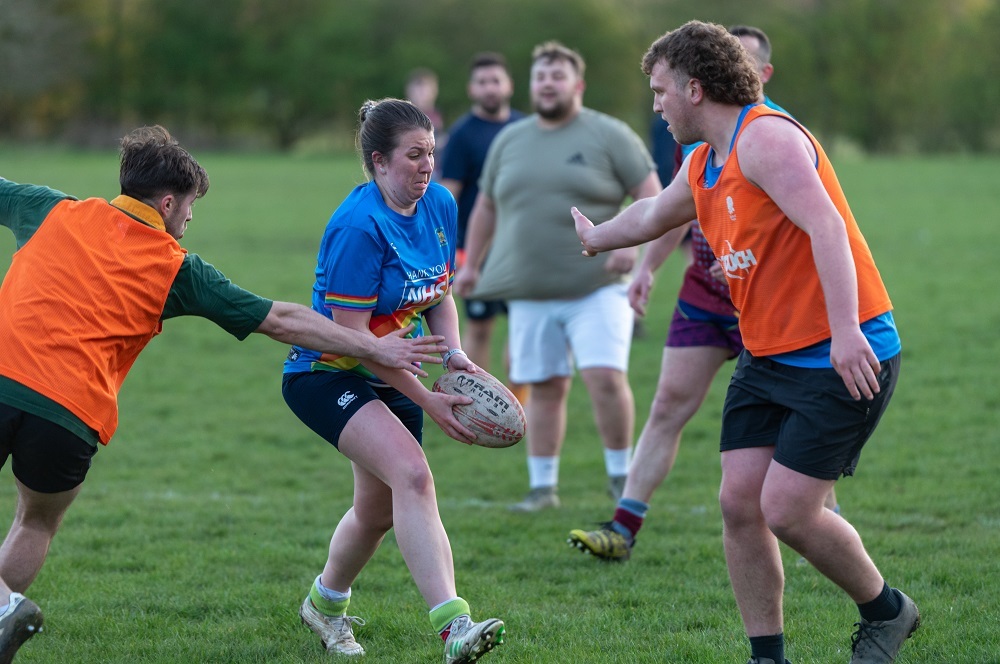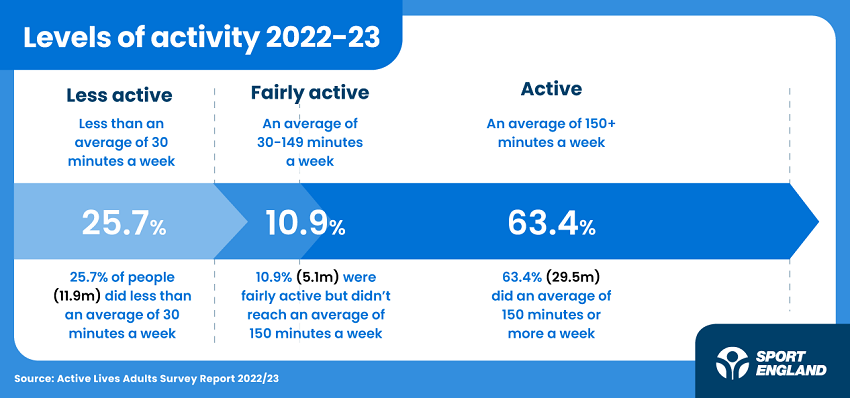Active Skills Hub Learning Portal
Strengthen your skills with flexible training provided in partnership with UK Coaching.

There are two million more adults getting active on a regular basis through sport and physical activity than in 2016, despite the impacts of the coronavirus (Covid-19) pandemic and increased cost of living pressures.
The new figures, published today in Sport England's latest Active Lives Adult Survey report, show that between November 2022 and November 2023, 63.4% of the adult population met the Chief Medical Officers’ guidelines of doing 150 minutes, or more, of moderate intensity physical activity a week. That’s equivalent to 29.5 million adults in England playing sport or taking part in physical activity every week.
This figure is largely unchanged from 12 months ago when 63.1% were active but means that, compared to when the survey was first run between November 2015 and November 2016, there are two million more active adults – an increase of 1.3%.
The number of people classed as inactive – averaging fewer than 30 minutes a week – has remained steady over the last year and 25.7% of the population (11.9m) are in this category compared to 25.8% 12 months ago.

The Active Lives Adult Survey Report also gives a detailed understanding of the factors that influence how likely a person is to be active.
A person’s age, sex, gender, ethnicity, socio-economic group, whether they have a disability or long-term health condition, and the place they live in are all significant factors impacting our relationship with sport and physical activity.
The report underlines that many longstanding inequalities remain, with women, those from lower socio-economic groups and Black and Asian people still less likely to be active than others.
The report also shows that where you live impacts on how likely you are to be active, with those living in more deprived places less likely to be active than those in places that are less deprived, from a high of 79% active in Brighton and Hove to a low of just 49% active in Barking and Dagenham.
More positively, while the older a person gets the less likely they are to be physically active, we’ve seen activity levels continue to grow among older adults over the past 12 months.
Activity levels for those aged 55+ are the highest they’ve been since records began, with those aged over 75 particularly driving this trend. Currently, 42.8% of people aged over 75 are physically active compared to just 33.4% between November 2015 and November 2016.
Today’s publication also outlines types of activities people are taking part in and how this is changing over time.
Active travel and fitness activities, which were significantly impacted by the pandemic, continue to recover as over a million more adults (+2.1%) have walked or cycled for travel and 802,000 (+1.5%) more have taken part in fitness activities compared to 12 months ago.
Furthermore, swimming numbers are now back in line with pre-pandemic (November 2018-19) levels following an increase of 400,000 (0.8%) compared to 12 months ago, while the number of people playing team sports continues to increase and is now at the highest level seen for six years.
Find more details and download the full report on Sport England's website.